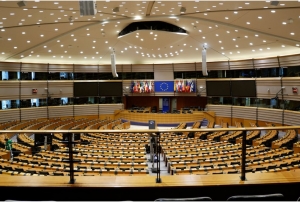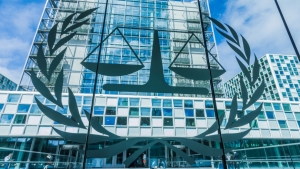The identification of customary international law has always been a challenge to students and practitioners alike. It is a task that demands extensive research, a good deal of argumentation, and oftentimes some degree of faith. Practice is often inconsistent, opinio juris may be missing, and there are usually plenty of objections to choose from. Sometimes it seems the law is there only for those who believe in it. The task is even harder in the case of human rights law, where obligations are not transactional, violations are frequent, and cultural, ideological and economic differences abound.
The Customary International Law of Human Rights by Professor William Schabas is a herculean attempt to clarify the issue. Its main purpose is to identify the status of human rights norms in customary international law. The book’s main argument is that the identification of customary human rights norms has become easier with time due to the near-universal acceptance of some human rights treaties and the abundance of evidence of both practice and opinio juris in the documents and debates of the Universal Periodic Review.
The main reason customary international law is so elusive is that, ultimately, one would need to analyse practice and opinio juris from nearly two hundred states. The ICRC study on customary international humanitarian law is an attempt at doing just that, going through military manuals, domestic laws, and other sources one by one, even though not necessarily from all states. While Professor Schabas’ research is just as extensive, his chosen method leads him in another direction.
For each human right the book engages, it follows a consistent formula. The starting point in most of cases is the Universal Declaration of Human Rights and the ratification of UN treaties. When those are universally accepted, there seems to be a recognition that the norm is customary. When that is not the case, the exercise turns to exploring how states that did not ratify these conventions (or have ratified them with reservations) have bound themselves to similar commitments in regional or other treaties. For the even fewer states to which this exercise does not demonstrate their being subject to the obligation, the author resorts to documents and statements in the context of the Universal Periodic Review, as evidence that these states have recognised to be bound by a given norm. Finally, to corroborate the findings, the author compiles judgments by international tribunals, documents from international bodies and teachings by other scholars.
This systematic method makes for very thorough research and very convincing arguments in each case. But it also raises some questions.
TREATY LAW AND CUSTOMARY LAW
The most fundamental question concerns the relationship between treaty law and customary law. The method employed in the book seems to imply a very direct correlation between the recognition of a given norm in a treaty and the existence of the same norm in customary law. If state A recognises the right to a fair and public hearing in a treaty, this is considered sufficient evidence of both practice and opinio juris from its part as to support the existence of this right in customary law. To put it collectively: if all (or almost all) states are part of a treaty that recognises certain right, then it is assumed this right is also customary law.
This could only be explained by the distinct nature of human rights law, where the main subjects of rights are not other state parties, but mostly people under its jurisdiction/authority. In other domains this logic would be less evident. If state A agrees to some sort of dispute settlement mechanism in a treaty with state B, it would be hard to see how this would translate into custom. Going further, even if this was a universal treaty (for instance if the WTO managed to achieve universal membership), it would be difficult to argue that this would apply as customary law independently of the treaty (if a state then decided to withdraw from the hypothetically universal WTO).
The International Court of Justice’s case law is relevant on this point. In Belgium v. Senegal, in a passage quoted in the book, the Court noted both parties’ recognition that “acts of torture are regarded by customary international law as international crimes, independently of the Convention.” The use of the word “independently” by the Court indicates that there may be cases in which a norm can exist in a treaty without an independent existence in customary law. In the Nicaragua case, the Court went even further to carefully distinguish customary and treaty obligations – though admittedly this was a distinction forced upon it by the US multilateral treaty reservation at the time that limited the Court’s jurisdiction (the so-called “Vandenberg reservation”).
So even though one cannot dispute the fact that treaties are a valuable resource from which to extract evidence of customary norms, one should also bear in mind the challenges arising from their use as the predominant source of customary law.
THE UNIVERSAL PERIODIC REVIEW
Another question concerns one of the most innovative aspects of the book: the systematic use of UPR statements as evidence of customary law. This approach can be summarised by the two following statements. First, “[w]hen States volunteer information about their domestic legislation, including constitutional provisions, this is because they consider it to be relevant to international obligations.” (p.79) And second, when these international obligations are not sourced in any specific treaty “the conclusion that they are in fact reporting on their obligations under customary international law seems inescapable.” (p. 78)
The fact that the UPR can be relied on in this manner is a big step. There seems to be quite a distance between discussing a particular human rights situation and endorsing a legal obligation. Therefore, this new tool must be handled with care – which, to be fair, Professor Schabas does. At least two observations are in order.
The first one is as a matter of law. HRC Resolution 5/1 defines the basis of the review as: a) the UN Charter; b) the Universal Declaration of Human Rights; c) human rights instruments to which a state is party; and d) “[v]oluntary pledges and commitments made by States, including those undertaken when presenting their candidatures for election to the Human Rights Council”. Not only is there no explicit role for custom, but there is indeed a recognised space for voluntary pledges – arguably distinct from legal obligations, and in any event from customary law. So one could take issue as to how “inescapable” is the conclusion that states are endorsing or basing themselves on customary law when mentioning some human right they have not recognised in treaty.
The second observation is a matter of policy. The UPR was established to overcome the perceived selectivity in the old Commission by providing for all countries to be assessed, with a view to improving the fulfilment of human rights across the globe. It is supposed to be a “cooperative mechanism, based on an interactive dialogue”, that should “take into account the level of development and specificities of countries.” There is some value to the fact that, when engaging in this exercise, states can do so in a cooperative and constructive manner. If it comes to a point that “anything you say can be used against you in court”, then some of this constructive nature might go missing. Still, it is undeniable that, when speaking in international fora, diplomats and other authorities are presumed to be presenting the official view of the state they represent, with long-term and at times unintended and unforeseen consequences – and this novel use of the UPR documents serves as a good reminder of that.
STILL THE CHALLENGE OF ECONOMIC, SOCIAL AND CULTURAL RIGHTS
Finally, there is one unavoidable consideration regarding economic, social and cultural rights. Professor Schabas is actively aware and constantly drawing attention to their usual neglect. And still, throughout his work, there are five chapters and almost 200 pages on political rights, as opposed to just one chapter and 30 pages on economic, social, and cultural rights, with one further chapter and 13 pages on solidarity rights. Certainly, this is partially a reflection of the problem itself: it is not the author’s purpose to create precedent where there is none (or few).
But that leads to another point, which is about the very content of these norms. On most economic, social and cultural rights laid out in the book, it is unclear what the existence of the customary norm actually means. In many cases, the discussion seems reduced to the recognition of the expression “right to x”, as opposed to what it entails in terms of subjective rights for citizen and obligations for states and other actors. In his methodological remarks, Professor Schabas notes that “detailed codification is beyond the scope of this study” (p. 102), and that “[d]etailed examination of the scope and application of the norms is a job for those who interpret and apply the law at the judicial and the political level” (p. 103). Rightly so. But still, in some cases – e.g. the right to health and medical care – one is left wanting to learn more about what the law actually is, especially given the complexity of the right.
CONCLUSION
Neither of these points could belittle the significance of The Customary International Law of Human Rights. To the contrary: these are issues which can only come to light because of the very careful and insightful work by Professor Schabas. Indeed, throughout my reading, I was always amazed with the depth and extension of the research carried out. Even as I write this review, I am still wondering how this compilation can be made by an individual, rather than by a collective body – such as the ICRC or the ILC. It is a brilliant work, which will certainly become a reference for all those working with or studying human rights.
The views expressed in this article are those of the author and not of the institutions with which he is affiliated
-

Bachelor of Laws by the University of São Paulo and Master of Laws by the University of Brasília. Diplomat at the Ministry of Foreign Affairs of Brazil.





